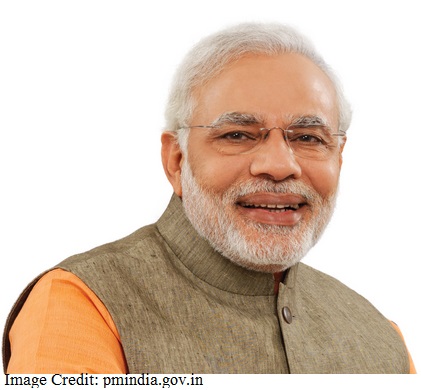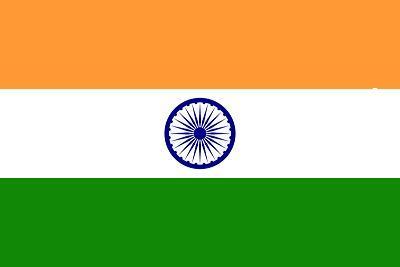Jana Gana Mana
National Anthem of India is a song sung by the people of India on various national occasions to pay respect to the nation. National Anthem of India starts from “Jana Gana Mana Adhinayaka Jaya He” and ends at “Jaya He, Jaya He, Jaya He, Jaya Jaya Jaya Jaya He”. It was written in highly Sanskritised Tatsama Bengali language.
Writer of National Anthem of India
The original national anthem was written by Rabindranath Tagore which was then translated into Hindi and Urdu by Abid Ali. The conversion of original song into the Hindi version by Ali was little different. The full version of the national anthem takes fifty-two seconds to sing whereas the shortened version (having first and last lines) takes 20 seconds to sing.
Translation of National Anthem into English Version
It was again translated into English version by Tagore. The full version of National Anthem is sung using the orchestral/choral adaptation (made by English composer, Herbert Murrill on request of Nehru). Another song (Amar Sonar Bangla) written by Tagore has been selected as the national anthem of Bangladesh.
History of Indian National Anthem
National anthem (Jana-gana-mana) was originally composed by Rabindranath Tagore in Bengali. The Hindi version of the national anthem was adopted in 1950 on 24th of January by the Constituent Assembly. The lyrics and music of the national anthem was given by Rabindranath Tagore in 1911. It was first sung in Calcutta in the meeting of Indian National Congress on 27th of December in 1911.
Full version of national anthem was translated to English from Bengali and music was set in Madanapalle (a city in Chittoor district, Andhra Pradesh state).
Importance of National Anthem
National Anthem of a country is the pride of nation and induces a sense of patriotism, courage and nationalism amongst its citizens. It is a way to show respect towards the country and spread the message of unity and harmony. It is also a symbol of freedom, sovereignty and the rich cultural history of the nation. National Anthem in schools helps to nurture the children with the positive vibes of patriotism since childhood and inculcate the feeling of respect and pride towards their country.
Singing of National Anthem is also a way to pay tribute to our great freedom fighters who fought for the country, and it also binds the whole nation with a single thread of unity and nationalism. The National Anthem of India is the praise of our motherland which helps us to feel proud and hopeful about our country. It showcases a distinct identity of our country’s history, culture, tradition, its people and regions.
Lyrics of National Anthem of India
The text of the national anthem written in Bengali is highly sanskritised language (also called as Sadhu Bhasa). It is written completely using nouns which are also used as verbs. The translated version is easily understandable by everyone; however its pronunciation varies in various regions and sung on various national occasions in India. The words and music to the national anthem was given by Late Rabindranath Tagore. Full version of National Anthem consists of five stanzas and takes 52 seconds to sing.
Full Version National Anthem of India
“Janaganamana-adhinayaka jaya he bharatabhagyabidhata!
Panjaba sindhu gujarata maratha drabira utkala banga
bindhya himachala yamuna ganga ucchalajaladhitaraṅga
taba subha name jage, taba subha asisa mage,
gahe taba jayagatha.
Janaganamangaladayaka jaya he bharatabhagyabidhata!
Jaya he, jaya he, jaya he, jaya jaya jaya jaya he…”
Short Version National Anthem of India
Short version of the national anthem consists of only first and last lines. It takes approximately 20 seconds to sing. It is sung on various national occasions.
“Jana-gana-mana-adhinayaka jaya he
Bharata-bhagya-vidhata.
Jaya he, Jaya he, Jaya he,
jaya jaya jaya, jaya he.”
Meaning of National Anthem of India
The original version of the national anthem was translated to the English language and edited in 1950 to make some changes. ‘Sindh’ was replaced by ‘Sindhu’ as ‘Sindh’ was allocated to Pakistan after partition. The English meaning of the national anthem is as follows:
“Thou art the ruler of the minds of all people,
Dispenser of India’s destiny.
Thy name rouses the hearts of Punjab, Sindhu,
Gujarat and Maratha,
Of the Dravida and Odisha and Bengal;
It echoes in the hills of the Vindhyas and Himalayas,
mingles in the music of Yamuna and Ganges and is
chanted by the waves of the Indian Sea.
They pray for thy blessings and sing thy praise.
The saving of all people waits in thy hand,
Thou dispenser of India’s destiny.
Victory, victory, victory to thee.”
What is Code of Conduct of National Anthem
The code of conduct is the set of rules and regulations which should be followed while singing or playing the national anthem. There are some instructions which are issued from time to time by the government of India regarding the correct version of the anthem. The set timing of the national anthem to be sung is 52 seconds. Some of the rules and regulations have been made in order to pay respect and honour to the national anthem.
A law (The Prevention of Insults to National Honour Act, 1971) has been implemented by the Indian government to prevent the intentional singing of National Anthem or insulting in any way shall be punished with the imprisonment of term (may be extended to three years) including fine. Following are the rules and regulations which shall be followed while playing or singing full version of the anthem:
- It can be sung when National Salute, parade etc is performed at some ceremonial occasions and formal State functions (organized by the government or public) in the presence of President, Governor, Lieutenant Governor etc.
- It can be sung before and after President’s addresses to the Nation and arrival of Governor or Lieutenant Governor.
- When presentation of regimental colours and hoisting of colors in Navy takes place.
- When special orders are issued by Indian Government on any occasion. Generally it is not played for Prime Minister however at some special occasions it may be played.
- When it is played by band, it should be preceded by roll of drums or when played to perform National Salute by a guard the drum roll duration must be 7 paces in slow march. First drum roll should be started slowly and go as loud as possible and again decrease to normal.
- When National Flag hoisting takes place on any cultural occasions.
- It can be sung in the schools in the morning before starting the day’s work by the students but proper manners should be maintained by the school authorities.
- All the audience must stand up and give attention while national anthem is sung or played.
Why theatres stopped playing the National Anthem in 1975
Earlier to 1975, there was a custom to play the national anthem in the theatres after the film. However, it was later removed because of the disrespect of National Anthem by the people as they were not standing up and giving proper attention.
Again Supreme Court of India, on 30th November 2016 made it mandatory to play National Anthem in movie theatres before the screening of movies to instill the sense of patriotism among people. However due to many controversies and violent incidents arising after the order, Supreme Court, on 09th January 2018, reversed the order of making it mandatory to play National Anthem in movie theaters.
Related Information:



